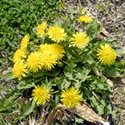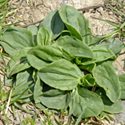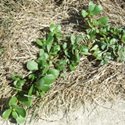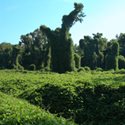Weeds have such a bad reputation that we decided to take some time to shine a positive light on these outcasts. You see, there are many weeds living in your yard that are actually very beneficial to your health and your wallet. So before you go destroying all the weeds in your backyard, consider a culinary approach.
| Dandelion | The dreaded dandelion is one of the most versatile weeds in your lawn. They can be brewed into wine, the leaves used in salads and the flowers eaten raw. Imagine uncorking your own vintage dandelion wine at your next garden party. | |
|---|---|---|
| Japanese Knotweed | Harvest the young red and green shoots before they grow beyond 6 inches. Remove any tough leaves or rind, then steam or simmer for a rhubarb-like taste. | |
| Plantain | Not to be confused with the tropical fruit, the plantain’s broad leaves can be used in salads when young or sautéed as they get older. Plantain seeds can be eaten raw or roasted. | |
| Creeping Charlie | Rich in Vitamin C, the young leaves can be eaten raw like spinach. We’ve even heard rumors of Creeping Charlie being brewed as a tea or used as an additive to beer! | |
| Purslane | Dubbed the healthy weed, purslane contains antioxidants, vitamins A and C and omega-3 fatty acids. Use the leaves and stems in recipes calling for spinach such as salads, sandwiches and quiches. | |
| Watercress | Watercress grows on almost any riverbank or stream and is another leafy spinach substitute. Pick watercress in the spring before it becomes bitter, wilt it, then add some bacon and balsamic vinegar. | |
| Lamb's Quarters | Loaded with vitamins A and C, calcium and protein, this leafy weed is commonly referred to as ‘wild spinach’. Sauté the washed leaves in olive oil with some salt, pepper and garlic for an easy side dish. | |
| Bamboo | While not a common weed, bamboo is very invasive, grows like a weed (pun intended) and is hard to control (all the attributes of weed behavior), earning it a spot on our list. Bamboo shoots taste like corn and are full of fiber. Ensure that you boil bamboo properly as some species contain cyanogen, which can be very toxic. | |
| Kudzu | The most invasive weed in the southern United States is also an edible plant. Kudzu leaves can be brewed into a tea which can allegedly help soothe colds, fevers, digestive issues and even allergies. | |
| Chicory | Chicory roots are a perfect additive to coffee (or even coffee substitute), helping you extend your supply or lower your caffeine intake. Aside from roasting the root, you can use young chicory leaves or flowers in salads. |
Harvesting wild plants and weeds can be dangerous if you incorrectly identify them or if they grow near a contaminated water source. If you aren’t sure, leave it alone—eating a weed is certainly not worth risking your health.
The next time you curse the weeds, though, think about the tasty possibilities instead. You might just be able to see your lawn as ripe with wild greens and wild edibles ready to be made into dandelion wine or a coffee substitute, or even a nice stir fry. Of course, if you want to control weeds instead, contact your local NaturaLawn® of America franchise here for a healthier approach to weed control.

















